Do you have a question about the Olympus WS-110 and is the answer not in the manual?
Lists registered trademarks of IBM, Microsoft, and Apple.
Emphasizes reading the manual for safe and correct operation, highlighting warning symbols.
Lists precautions for operating the recorder in various environments and conditions.
Details critical warnings and safety instructions regarding battery insertion, handling, and replacement.
Identifies and labels all external buttons, jacks, and components of the main unit.
Provides step-by-step instructions for correctly inserting an AAA battery into the recorder.
Guides on when and how to replace the battery, including low battery indicators.
Explains how to power the device on/off and its standby mode behavior.
Details the function of the HOLD switch to disable button operations and its effect on the display.
Guides users through the process of setting the recorder's internal clock and date.
Explains the use of five folders (A-E) for organizing recorded files, with a limit of 200 messages per folder.
Details the steps to initiate, monitor, and conclude a recording session.
Describes how to temporarily pause a recording and resume it later.
Guides on connecting and using external microphones or other devices for recording.
Outlines the process of selecting a folder, choosing a file, and starting playback.
Explains how to stop, resume, fast forward, and rewind during playback.
Provides instructions and warnings for using earphones for playback.
Step-by-step guide to deleting individual audio files from a selected folder.
Instructions for bulk deletion of all files within a chosen folder.
Important notes regarding file restoration, lock status, and potential data damage during erasure.
Explains the structure of main and sub menus and how to navigate them using buttons.
Details the process of selecting, changing, and confirming settings within the menu system.
Lists and describes various recording quality modes (Stereo XQ, HQ, SP, LP) and their respective recording times.
Explains how to adjust microphone sensitivity for different recording scenarios (Conferences, Dictation).
Details the VCVA feature that automatically starts/stops recording based on sound levels.
Describes the LowCut filter's purpose in reducing low-frequency noise for clearer voice recording.
Explains the Voice Filter's role in improving playback clarity by filtering high and low frequencies.
Covers changing playback speed via button presses and menu settings for slow or fast playback.
Explains how to enable 'All Play' to continuously play all files within a folder.
Details how to lock files to prevent accidental erasure during folder deletion.
Allows disabling system beeps for operations and turning off the record/play indicator light.
Guides on adjusting the display's contrast level for better visibility.
Explains how to access and view the recorder's system version information.
Provides instructions for resetting the recorder to factory defaults, erasing all data.
Explains how to set and clear index marks for quick file location during playback.
Details how to connect the recorder to a PC for data transfer and usage as a storage device.
Lists PC system requirements and important notes for connecting the recorder via USB.
Provides solutions for common problems like unresponsive buttons, no sound, and recording failures.
Details recording medium, time, microphone, speaker, power, and battery life for both models.
Lists physical dimensions, weight, and optional accessories available for the recorder.
Lists registered trademarks of IBM, Microsoft, and Apple.
Emphasizes reading the manual for safe and correct operation, highlighting warning symbols.
Lists precautions for operating the recorder in various environments and conditions.
Details critical warnings and safety instructions regarding battery insertion, handling, and replacement.
Identifies and labels all external buttons, jacks, and components of the main unit.
Provides step-by-step instructions for correctly inserting an AAA battery into the recorder.
Guides on when and how to replace the battery, including low battery indicators.
Explains how to power the device on/off and its standby mode behavior.
Details the function of the HOLD switch to disable button operations and its effect on the display.
Guides users through the process of setting the recorder's internal clock and date.
Explains the use of five folders (A-E) for organizing recorded files, with a limit of 200 messages per folder.
Details the steps to initiate, monitor, and conclude a recording session.
Describes how to temporarily pause a recording and resume it later.
Guides on connecting and using external microphones or other devices for recording.
Outlines the process of selecting a folder, choosing a file, and starting playback.
Explains how to stop, resume, fast forward, and rewind during playback.
Provides instructions and warnings for using earphones for playback.
Step-by-step guide to deleting individual audio files from a selected folder.
Instructions for bulk deletion of all files within a chosen folder.
Important notes regarding file restoration, lock status, and potential data damage during erasure.
Explains the structure of main and sub menus and how to navigate them using buttons.
Details the process of selecting, changing, and confirming settings within the menu system.
Lists and describes various recording quality modes (Stereo XQ, HQ, SP, LP) and their respective recording times.
Explains how to adjust microphone sensitivity for different recording scenarios (Conferences, Dictation).
Details the VCVA feature that automatically starts/stops recording based on sound levels.
Describes the LowCut filter's purpose in reducing low-frequency noise for clearer voice recording.
Explains the Voice Filter's role in improving playback clarity by filtering high and low frequencies.
Covers changing playback speed via button presses and menu settings for slow or fast playback.
Explains how to enable 'All Play' to continuously play all files within a folder.
Details how to lock files to prevent accidental erasure during folder deletion.
Allows disabling system beeps for operations and turning off the record/play indicator light.
Guides on adjusting the display's contrast level for better visibility.
Explains how to access and view the recorder's system version information.
Provides instructions for resetting the recorder to factory defaults, erasing all data.
Explains how to set and clear index marks for quick file location during playback.
Details how to connect the recorder to a PC for data transfer and usage as a storage device.
Lists PC system requirements and important notes for connecting the recorder via USB.
Provides solutions for common problems like unresponsive buttons, no sound, and recording failures.
Details recording medium, time, microphone, speaker, power, and battery life for both models.
Lists physical dimensions, weight, and optional accessories available for the recorder.
| Stereo XQ mode recording time | Approx. 8 hours 50 minutes |
|---|---|
| Stereo HQ mode recording time | Approx. 17 hours 40 minutes |
| Stereo SP mode recording time | Approx. 35 hours 25 minutes |
| HQ mode recording time | Approx. 35 hours 25 minutes |
| SP mode recording time | Approx. 69 hours 40 minutes |
| LP mode recording time | Approx. 138 hours 30 minutes |
| Stereo XQ mode battery life | Approx. 13 hours |
|---|---|
| Stereo HQ mode battery life | Approx. 14 hours |
| Stereo SP mode battery life | Approx. 15 hours |
| HQ mode battery life | Approx. 16 hours |
| SP mode battery life | Approx. 17 hours |
| LP mode battery life | Approx. 19 hours |
| Stereo XQ mode battery life | Approx. 11 hours |
|---|---|
| Stereo HQ mode battery life | Approx. 12 hours |
| Stereo SP mode battery life | Approx. 12 hours |
| HQ mode battery life | Approx. 14 hours |
| SP mode battery life | Approx. 14 hours |
| LP mode battery life | Approx. 16 hours |
| dimensions | 94.7 (L) × 37 (W) × 10 (T) mm |
|---|---|
| weight | 47 g |
| maximum power | 70 mW |
| HQ mode recording time | Approx. 17 hours 35 minutes |
|---|---|
| SP mode recording time | Approx. 34 hours 40 minutes |
| LP mode recording time | Approx. 69 hours 00 minutes |
| HQ mode battery life | Approx. 18 hours |
|---|---|
| SP mode battery life | Approx. 18 hours |
| LP mode battery life | Approx. 21 hours |
| HQ mode battery life | Approx. 15 hours |
|---|---|
| SP mode battery life | Approx. 15 hours |
| LP mode battery life | Approx. 17 hours |
| dimensions | 94.7 (L) × 37 (W) × 10 (T) mm |
|---|---|
| weight | 46 g |
| maximum power | 70 mW |


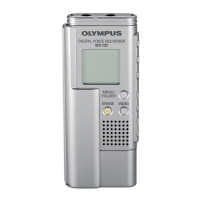
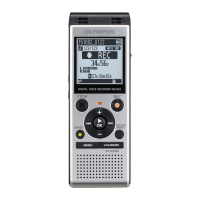
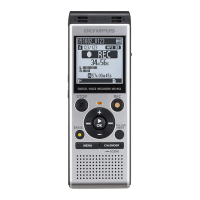

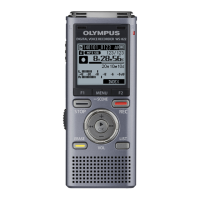
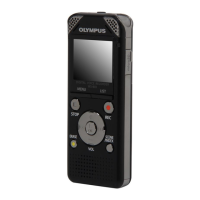


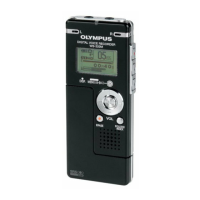

